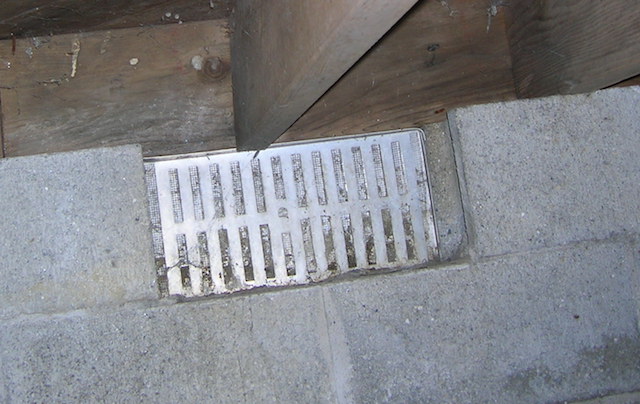A guide to crawl space ventilation
To understand the concept of crawl space repair® properly you must first understand the problems associated with the crawl space. Most often the actual problem is not discussed, but rather the symptoms. Once you understand the problems, the solutions become much easier to understand and implement. In many cases professional companies are good at selling products to battle symptoms, but not good at understanding the actual problem in the crawl space. With that said, it's easy to understand that odor is a problem to the homeowner, but is actually a symptom. Without understanding the difference between a symptom and the problem, how can they can offer a solution that will resolve the actual problem.
The most common crawl space symptoms, according to complaints gathered by crawl spacerepair.com®, are: crawl space mold, crawl space odor, cold floors, freezing water pipes & flooding/water problems.
 The common denominator for these crawl space symptoms are the foundation vents. These crawl space vents allow the moisture in the outside air to equalize with the crawl space air and the outdoor temperature to penetrate the building envelope. Relative humidity (RH) percentage changes with air temperature for the same air. For example, if the outdoor air temperature is 85F and the RH is 50% the same air at 65F is 100% RH. Many crawl spaces, depending on location of course, maintain a crawl space air temperature under 70F. You can play with the dew point/RH/air temp calculator here- http://www.dpcalc.org/ and see for yourself how the current outside conditions are affecting your crawl space.Crawl Space Vents are Not Good For the Home
The common denominator for these crawl space symptoms are the foundation vents. These crawl space vents allow the moisture in the outside air to equalize with the crawl space air and the outdoor temperature to penetrate the building envelope. Relative humidity (RH) percentage changes with air temperature for the same air. For example, if the outdoor air temperature is 85F and the RH is 50% the same air at 65F is 100% RH. Many crawl spaces, depending on location of course, maintain a crawl space air temperature under 70F. You can play with the dew point/RH/air temp calculator here- http://www.dpcalc.org/ and see for yourself how the current outside conditions are affecting your crawl space.Crawl Space Vents are Not Good For the Home
The biggest problem with the crawl space is it’s location in the homes envelope. The stack affect draws air from the lowest point/crawl space into the home. The air is then replaced in the crawl space from outdoors. That's a good thing right? Actually, that's a bad thing and here's why. When the crawl space temperature is cooler than the outdoor temperature the crawl space will experience condensation. Condensation then creates conditions for mold and mildew growth. When the outside temperature is cooler than your crawl space have cold floors, frozen pipes & energy loss. Now, both of those scenarios are going to be the extreme. When the outside temperature is warmer by just a few degrees, say 10F, then it's not as big a deal to the crawl space’s cooler temperatures, therefore causing minimal if any condensation or moisture problems. The same thing applies the other way when the outside temperatures are cooler, but only by a few degrees the threat of frozen pipes and cold floors are minimal. Now, location of your home in relation to north or south or somewhere in between will determine how long your home will be in a compromise state.
These conditions are created because of the semi-separation of environments between the inside and the outside. When a crawl space is vented to the outdoors the dew point temperature is the same inside the crawl space and outside the home. Dew point temperature is a key to understanding the solution to most crawl space problems. Anytime the dew point temperature is the same and the air temperature is different there will be two entirely different environments. Where you would have warm and humid in one you will have cool and damp in the other. Where you have cool and dry in one you will also have warm and arid in the other. This is why products like fans with a humidity switch don't work. These fans will only create a desirable condition during a few short weeks per year spread apart by months.